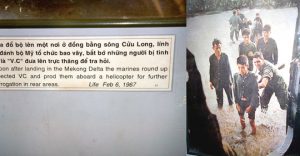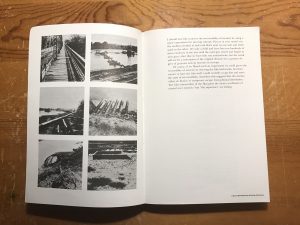| What I wanted to write about today is the concept and practice of “claiming” in relationship to art and specifically social practice. I’ve always struggled with how much students and artists need to know about art to be able to function effectively as artists, sometimes I’ve felt like it might be better to know very little (so as not to be limited by existing frameworks and models), and when it comes to the MFA that I currently am in charge of I encourage people who don’t have undergrad degrees in art to apply, and we have happily accepted folks with degrees in lots of other disciplines, many of whom went on to make amazing art work. If it were in fact up to me, I’d also potentially accept people with no undergraduate degree at all just based on their work and life experience, but the university won’t go for that.
At the same time my own knowledge of art history has been very influential on my practice and informs a lot of the work I do in a wide variety of ways both conceptual and aesthetic. Duchamp’s readymades, and Richard Prince and Sherry Levine’s work using appropriation have been very important to me in developing my own practice and projects. I was thrilled as a young student when I learned about those approaches, so it is always interesting to me how presenting those concepts to my own students can have such emotionally negative reactions, they seem to feel that those artists were cheating, and think that their success somehow undermines the students own skills in more traditional artist techniques. I’ve seen undergrads brought to tears when learning about Duchamp and his status in the world of contemporary art.

[The American War. Harrell Fletcher]
Anyway, what I wanted to write about here is the potential use of what I’m going to call “claiming” as an artistic method. What I’m talking about has all sorts of potential applications from ones that are just expansions of readymades and appropriation, which is in many ways what I was doing with my project The American War (though I added in site-specific participatory events as well), to other uses which start to operate further afield partly because they can function outside of the need to create some kind of object that can be bought and sold and displayed in an art world venue. I recall that Fischli and Weiss had a project in the late 90’s as part of the Munster Sculpture Project where they just claimed a community garden as their project and directed people to go see it. Actually, I just looked that up and it turns out it was a garden that they had constructed to look like a community garden and it was temporary just for the exhibition time, so that doesn’t work as an example of claiming in the sense that I’m talking about. (Though it does fit well into another topic I’d like to write about sometime which is how prior to the use of the internet it was sometimes hard to find out accurate details about temporary projects and through the reliance of limited documentation or even just word of mouth artists would often be inspired to create something new based on a misinterpretation or lack of details of something that had happened before. That might be something that is being undermined now by so much digital availability to vast documentation and information on the web.)
So let’s just say Fischli and Weiss had not created the garden, but had instead just claimed it, would that be valid? For me it’s no different than a photographer taking a picture of a garden (or any other pre-existing thing) and then presenting the print as their work. Some would say that the formalization of the photograph (composition, technical elements, printing, framing, etc.) are what makes the photograph art, which from my point of view (as a fan of appropriation) isn’t necessary to call something art. It’s really just the act of calling it art that makes it art, but in the case of an artist claiming a garden (or any other pre-existing thing) as their art, there are still various formalizing aspects to doing that.

[photo credit: Fischli/Weiss: Garten, 1997/2016. Bild: © Fondation Beyeler]
Let’s once again take the garden as a hypothetical example even though in reality it wasn’t done in the way that I thought it was, but let’s suspend reality and pretend that it was. If that had been the case then the project would have been formalized by its inclusion in the program listing along with the other projects that were a part of the show, it would have been on the map showing where all of the sculpture projects were located, there would be a title, description, etc, it would have been included in the exhibition catalog, it would have been documented and re-presented, basically anything that would have happened to a constructed outdoor sculpture that was included in a major exhibition would also have happened to the pre-existing, site-specific, ongoing garden or whatever.
There is a potential problem with this approach that goes beyond just being valid or not as art. It could also be thought of as an imperialistic approach in that the artist without having actually made anything other than a claim, would be seen as the author of a project that someone else or some other group actually created and maintained. This hits on something I’ve also written about related to crediting, and I think it is applicable not only to conceptual claiming projects, but also to almost anything that involves other people’s un-credited contributions to art projects from assistants, fabricators, silent collaborators, participants, etc. In the case of the garden and projects like that it is simple enough to find out who actually created and maintained the garden and then to get approval from them to use the garden as part of an art project and credit them for their role. If it is possible or desirable to share funding then that can happen as well. My sense is that most people would happily have their garden (etc) included in a major art exhibition, especially if they are getting credit and potentially even payment.
Ok, so what if the claimed pre-existing thing isn’t part of a major art project. It can still work without any validating institutional approval or inclusion (though as with all art, that makes it easier to be seen as significant and valuable). There are still other ways for artists to formalize their claim. They can program their own event related to the site or object, they can document it, title it, etc. and then just put it on a website, make a zine about it, present it at a lecture, etc, etc. It could also be more than a single claim, imagine for instance a series of spots that an artist locates and formalizes to go together, like making a music playlist the artist could suggest that people check out a certain tree, talk to a particular person at a store, look at a specific book at a library, eat a suggested item at a food cart, etc. all in a detailed out sequence with potentially added information about each location, sort of like a walking tour of the senses. This selection of claimed spots could be made available in a variety of forms, for instance maybe published in a local weekly newspaper or put up as a flier, or just told to a set of people, and in that way becomes applied and no longer just an idea, then can be listed on a resume, presented in lectures, printed in publications etc, just like any other work of art.

[A Tour of the Monuments of Passaic, New Jersey by Robert Smithson (1967).]
A related example that also had a huge impact on me were two works by Robert Smithson, his 1967 photo article A Tour of the Monuments of Passaic, New Jersey, in which he describes in a very conversational tone a set of “monuments” which he observed which were in reality industrial units and piles that he was giving extraordinary significance to, basically treating things like art that weren’t intended as art. In a similar piece, The Hotel Palenque from 1972, (initially presented as a slide lecture, and later published in a Parkett magazine where I first encountered it) Smithson details with photos and more nonchalant but validating language a hotel in Mexico that he stayed at which was undergoing at the same time a process of literal construction and de-construction. The only real difference between the Smithson pieces and what I’m suggesting is the way that an audience can be invited to participate in experiencing the chosen claimed places, objects, sounds, etc.
I think the concept of claiming has all sorts of potential artistic and curatorial applications and would be a welcome addition or even substitution for much of the work produced currently by art students and other artists, who instead continue the largely futile production of studio based objects in the hopes of showing and selling in galleries, which is very unlikely given the high volume of art object production and the scarcity of status quo venues. |